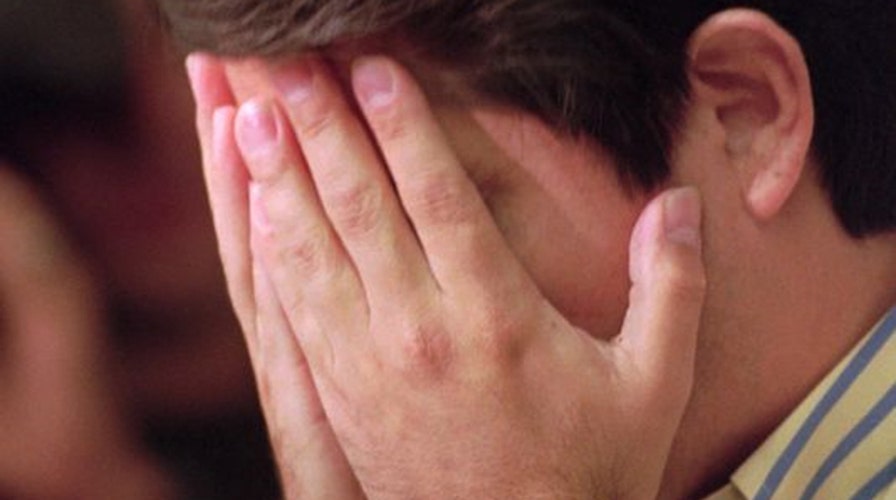Everyone experiences anxiety from time to time – it is a normal human emotion, after all. We feel nervous or anxious at work, before a big exam or when making crucial decisions in our life.
For some, however, anxiety goes beyond being just a passing feeling. Instead, it causes such great distress that affects their ability to live a normal life. This is when anxiety becomes a disorder.
Anxiety disorders affect about 18 percent of the American population, making them the most common mental illnesses in the country. That means that at any given time, about 40 million are suffering from some sort of anxiety disorder.
The exact cause of anxiety disorders is still unknown, but has been linked to chemical imbalances in the brain, as well as environmental stressors – or a combination of the two.
There are several recognized types of anxiety disorders, as well as ways to combat them and mitigate the symptoms they cause.
Generalized anxiety disorder (GAD): People with this disorder worry excessively even when there is little or nothing to provoke this tension or anxiety. Currently, about 6.8 million adults are affected by GAD.
Obsessive-compulsive disorder (OCD): People with OCD are overwhelmed by constant thoughts or fears (obsessions) which in turn cause them to perform certain routines (compulsions) as a way to deal with the obsession. Hoarding is an example of OCD behavior.
Panic disorder: People with this condition have often say it feels like they are choking or having a heart attack. There are feelings of extreme anxiety that strike unexpectedly, again and again without warning.
Post-traumatic stress disorder (PTSD): This a condition that can develop following a traumatic event, such as a sexual or physical assault, or a natural disaster. People with PTSD often have reoccurring thoughts and memories of their ordeal and are often emotionally numb.
Social anxiety disorder: This disorder involves overwhelming worry and self-consciousness about everyday social situations. The worry often centers on a fear of being judged by others, and being embarrassed or ridiculed.
Specific phobias: This is an intense fear of a specific object or situation, such as insects, germs or flying. The intense level of fear someone feels can cause them to avoid common, everyday situations.
Symptoms of anxiety disorders can include:
- Feelings of panic, fear, and uneasiness
- Uncontrollable, obsessive thoughts
- Recurring thoughts or flashbacks of traumatic experiences
- Nightmares
- Compulsive behaviors, such as repeated hand washing
- Problems sleeping
- Cold or sweaty hands and/or feet
- Shortness of breath
- Heart palpitations
- An inability to be still and calm
- Nausea
- Muscle tension
- Dizziness
Diagnosing anxiety disorder is not clear cut. Usually it begins with a doctor ruling out a physical or medical condition based on the symptoms that are presented. If no physical illness is found, you may be referred to a mental health professional (psychiatrist or psychologist) to be evaluated. The doctor will base the diagnosis on the intensity and duration of symptoms as well as your attitude and behavior.
If you are diagnosed with an anxiety disorder, there are many different ways to treat it. Some treatments include medication, psychotherapy, cognitive behavioral therapy, dietary and lifestyle changes, and relaxation therapy. What works best is really based on each individual and their particular needs.
My best recommendation is to try natural methods first, and use synthetic medications as a last resort. Some doctors are quick to prescribe a pill, but the easiest answer isn’t necessarily the best answer.
Here are some ways to do this:
Exercise regularly, it can calm anxiety, and a recent study published in The Journal of Neuroscience suggests that regular exercise helps our brains cope with stress and anxiety more easily.
Make sure you eat something and lay off the caffeine – especially if you are going to be in a stressful situation. Symptoms of hypoglycemia, low blood sugar, and too much caffeine can mimic those of a panic attack. Shakiness, dizziness, and sweating are all common symptoms for those who suffer from anxiety. You don’t want give yourself feelings of panic, when all you need is a snack.
Meditation can help the brains ability to change. This, in turn, can change what our brain focuses on, and how we react to it, reducing feelings of anxiety.
Seek counseling and support. Learning to recognize troublesome feelings and understanding the patterns and behaviors of your disorder can help you better cope with the stresses of your life.
You may not be able to get rid of your anxiety disorder, but you can learn to live with it by lessening your symptoms.

